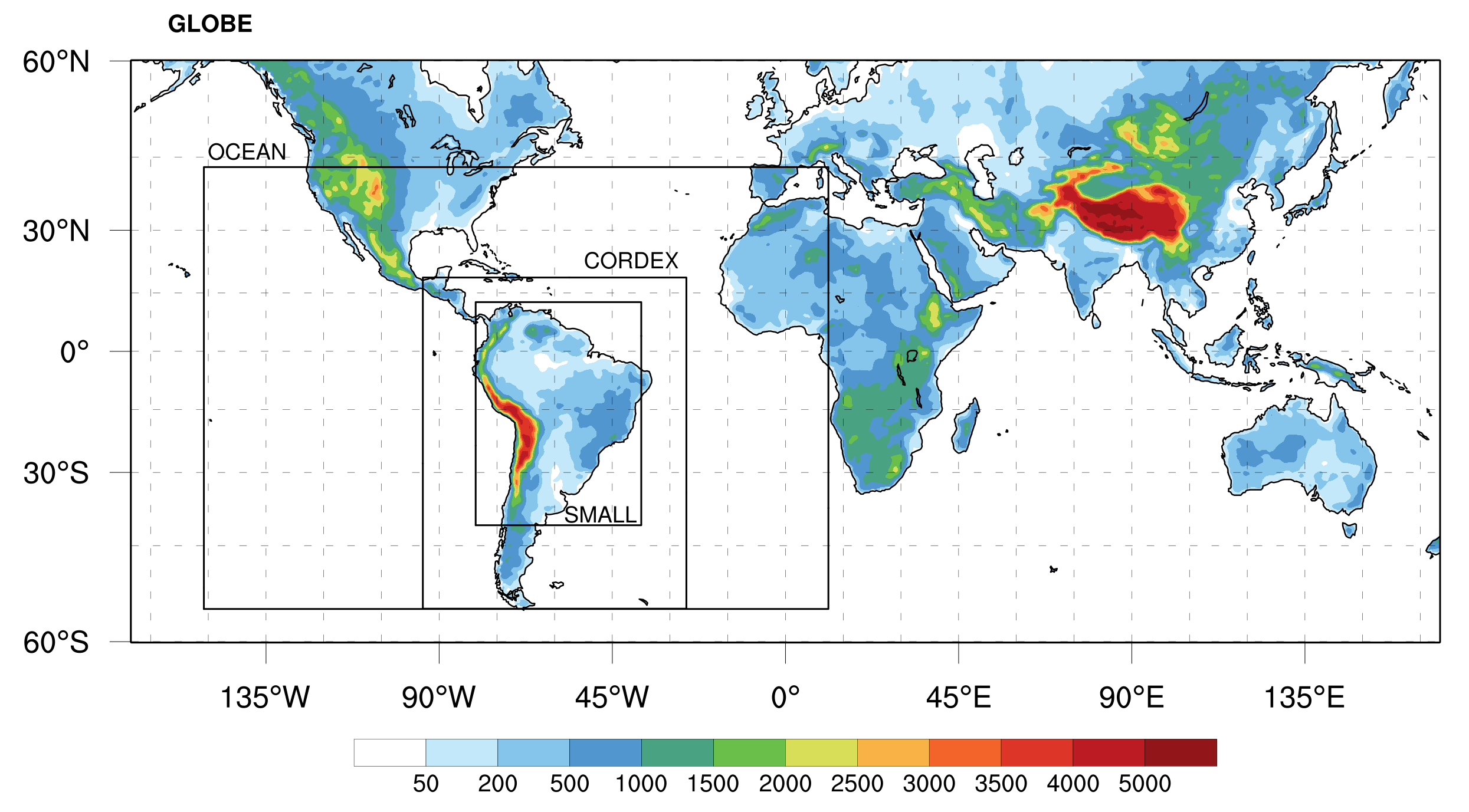Explicitly Accounting for the Role of Remote Oceans in Regional Climate Modeling of South America
Dynamics of the climate system is strongly region‐dependent and this regional dependency has posed an essential demand for high resolution regional climate simulations. While current global climate models (GCMs) are too coarse to resolve many important small‐scale processes, regional climate models (RCMs) are intensively used to provide high‐resolution climate simulations. Besides resolving the fine‐scale heterogeneity, RCMs also need to capture the impacts of large‐scale and even planetary scale drivers on regional climates. However, these forcings are often associated with mechanisms that reside and act outside of regional domains. The common solution in dynamic downscaling is to nest a higher‐resolution regional climate model (RCM) into a global model that resolves the large‐scale circulation. However, nested RCMs can develop distinct large‐scale features that substantially diverge from those of the driving model. This is especially problematic over regions such as South America (SA), where the climate features strong teleconnection with remote oceans.

In this project we proposed to explicitly resolve the atmospheric processes underlying the teleconnection by expanding the RCM domain to include the influential oceans. Using the coupled RegCM4.3.4‐CLM4.5 model, RCM simulations designed under the new paradigm demonstrate a substantial improvement of model skills over those using the standard CORDEX SA domain. Analysis of the underlying physical mechanisms indicates that the RCM captures the large‐scale dynamics and climate teleconnections substantially better when it includes the influential oceans. The Big Brother experimental protocol is then used to identify sources of uncertainties and skills, and the results suggest that the nesting practice cannot effectively capture the impact of forcings and processes acting outside the RCM domain. This uncertainty introduces substantial systematic bias to RCM simulations yet is not sampled by existing coordinated regional modeling projects (e.g., CORDEX) due to the use of a single domain focusing over land. Explicitly including oceans within the domain substantially reduces the sensitivity of the SA model climate to domain size/location and promises great potential for RCM applicability in studying regional mechanisms and feedback processes of SA's hydroclimate.
Here are some of the tools and techniques I used in this project:
- Climate simulations, Regional Climate Models, Lateral Boundary Conditions, climate teleconnections
- Spatiotemporal data analysis, exploratory data analysis, geospatial data analysis
- Model bias, uncertainty analysis, input data quality, structural uncertainty
You can find more information about this project at the following paper:
Erfanian, Amir, and Guiling Wang. "Explicitly accounting for the role of remote oceans in regional climate modeling of South America." Journal of Advances in Modeling Earth Systems 10, no. 10 (2018): 2408-2426..
